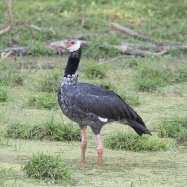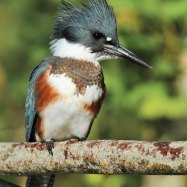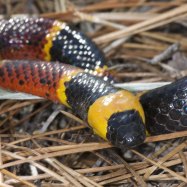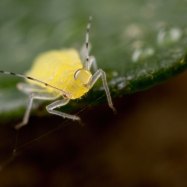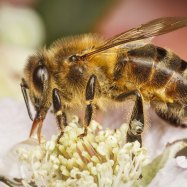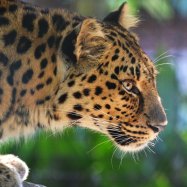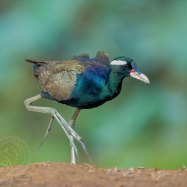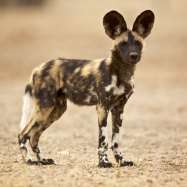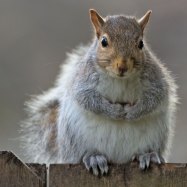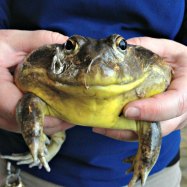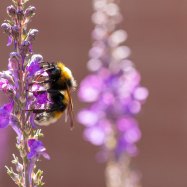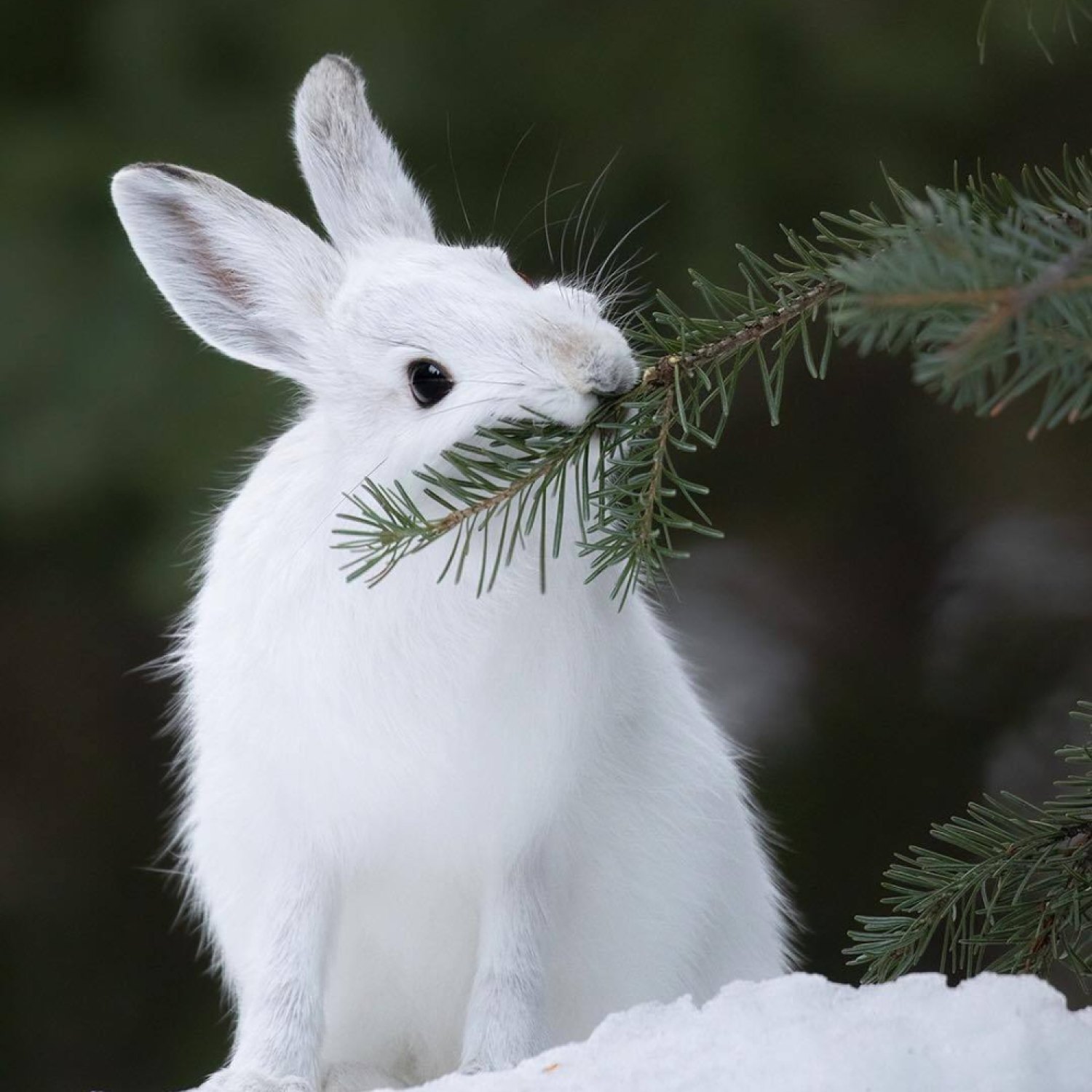
Snowshoe Hare
17.7-23.6 inches (45-60 cm)
The Snowshoe Hare, found in the Northern Hemisphere, is a small and compact animal with a length of 17.7-23.6 inches. Belonging to the Leporidae family, they are known for their distinctive snowshoe-like feet, allowing them to move quickly on snow. Watch out for these adorable hares on your next nature walk! 🐰❄️ #SnowshoeHare #NorthernHemisphere #Leporidae #AdorableWildlife
Animal Details Summary:
Common Name: Snowshoe Hare
Kingdom: Animalia
Habitat: Boreal and subalpine forests, tundra
The Incredible Snowshoe Hare: Surviving in the Harsh Northern Climate
In the vast, snowy landscapes of North America, a small and elusive creature roams – the snowshoe hare. This remarkable animal is known for its incredible ability to adapt and thrive in the harsh northern climate, making it a fascinating subject for study and a key indicator of the health of its ecosystem.Meet the Snowshoe Hare
Also known by its scientific name Lepus americanus, the snowshoe hare belongs to the Animalia kingdom and the Chordata phylum, making it a classified mammal. It is part of the Lagomorpha order and the Leporidae family, which includes rabbits and hares Snowshoe Hare. With its large hind feet and brown fur in the summer and white fur in the winter, the snowshoe hare stands out as a stunning and resilient animal.These hares are commonly found in the northern hemisphere, particularly in the boreal and subalpine forests of North America, and are native to the United States and Canada. Due to their exceptional adaptability, they can also survive in tundra habitats, making their geographical distribution widespread.
Snowshoe Hare Habitat and Diet
The snowshoe hare’s natural habitat is essential to its survival, as it provides protection from predators, food sources, and shelter. These hares are most commonly found in dense coniferous forests with a thick understory, providing them with ample hiding spots and food choices. However, they are also found in subalpine forests, tundra, and mountain regions, displaying their ability to survive in a variety of environments.Their feeding method is primarily herbivorous, as they mainly consume plants, twigs, bark, and buds. In the summer, they feast on a variety of vegetation, including leafy greens, grasses, and berries. However, during the winter months, when resources are scarce, they mainly survive on the twigs and bark of small trees and shrubs Scissor Tailed Flycatcher. This adaptation allows them to thrive in regions that experience significant snowfall, as they can burrow under the snow and feed on the plants that emerge through the snowpack.
The Fascinating Adaptations of the Snowshoe Hare
The snowshoe hare has evolved to possess various adaptations that allow it to survive in the harsh northern climate. These adaptions include physical, behavioral, and reproductive changes that set them apart from other hares and enable them to withstand the challenges of their environment.One of the snowshoe hare’s most distinctive physical adaptations is its large hind feet, which are three times bigger than its front feet. These oversized feet act as natural snowshoes, allowing the hare to hop and move across the snow without sinking. This unique adaptation gave them their common name - snowshoe hare.
Their fur also undergoes a remarkable transformation in the winter. In the summer, they have brown fur to blend in with their surroundings, but as the temperatures drop, their fur turns white, making them almost invisible against the snow. This important adaptation is known as camouflage, providing them with protection from predators such as lynx, wolves, and coyotes.
Apart from their physical adaptations, snowshoe hares also exhibit behavioral changes that aid in their survival. They are primarily active at dawn and dusk and have a keen sense of smell and hearing, helping them detect predators. Interestingly, during the winter, they are also known to change their track patterns to confuse predators and potentially lead them to believe they have multiple hares in the area.
In addition to these adaptations, the snowshoe hare also has a reproductive strategy that contributes to their high population. They breed prolifically and can have several litters a year, with an average litter size of four to six leverets (baby hares). This efficient reproductive strategy ensures that their population remains stable despite the harsh conditions and predation.
The Impact of Climate Change on Snowshoe Hares
The snowshoe hare’s remarkable adaptations have allowed them to survive in the harsh northern climate for centuries. However, as climate change accelerates, this may pose significant challenges for their survival. With rising temperatures and changing snow patterns, the snowshoe hare’s camouflage may become less effective, making them more vulnerable to predators.Moreover, as the snowshoe hare’s habitat changes, their primary food source may also be affected. Loss of habitat and food sources can result in food shortages, making it more difficult for the hare to survive during the winter months. This, in turn, can cause a decline in their population and potentially disrupt the delicate balance of their ecosystem.
The Role of Snowshoe Hares in their Ecosystem
Snowshoe hares are a crucial part of the northern ecosystem, as they serve as both predator and prey. As herbivores, they have a significant impact on the vegetation of their habitat, helping to control plant growth. They also provide food for predators, such as the Canada Lynx, whose population relies heavily on the snowshoe hare.In addition, the snowshoe hare also plays a critical role in seed dispersal, as the seeds of plants they consume are distributed in their droppings, aiding in the growth and diversity of their ecosystem.
Conservation Efforts for the Snowshoe Hare
As climate change poses a threat to the snowshoe hare’s habitat and survival, conservation efforts are crucial to protect this elusive creature and preserve the health of their ecosystem. One of the main strategies to help snowshoe hares is to protect their habitat and ensure healthy populations of their predators to maintain a balanced ecosystem.Moreover, measures have been taken to reduce the impact of climate change and minimize human activities that harm their natural habitat, such as logging and mining. Scientists are also studying the snowshoe hare’s behavior and adaptations to better understand how they are affected by changes in their environment, providing valuable insights for conservation efforts.
Conclusion
In conclusion, the snowshoe hare is undoubtedly an extraordinary and resilient creature, defying the odds in its ability to survive in the harsh northern climate. Its remarkable physical and behavioral adaptations, along with its crucial role in the ecosystem, make it a vital, integral part of the natural world. However, as climate change continues to have a significant impact on their habitat, it is crucial to understand and protect these hares to ensure their survival for generations to come.

Snowshoe Hare
Animal Details Snowshoe Hare - Scientific Name: Lepus americanus
- Category: Animals S
- Scientific Name: Lepus americanus
- Common Name: Snowshoe Hare
- Kingdom: Animalia
- Phylum: Chordata
- Class: Mammalia
- Order: Lagomorpha
- Family: Leporidae
- Habitat: Boreal and subalpine forests, tundra
- Feeding Method: Herbivorous
- Geographical Distribution: North America
- Country of Origin: United States, Canada
- Location: Northern Hemisphere
- Animal Coloration: Brown in summer, white in winter
- Body Shape: Small and compact
- Length: 17.7-23.6 inches (45-60 cm)
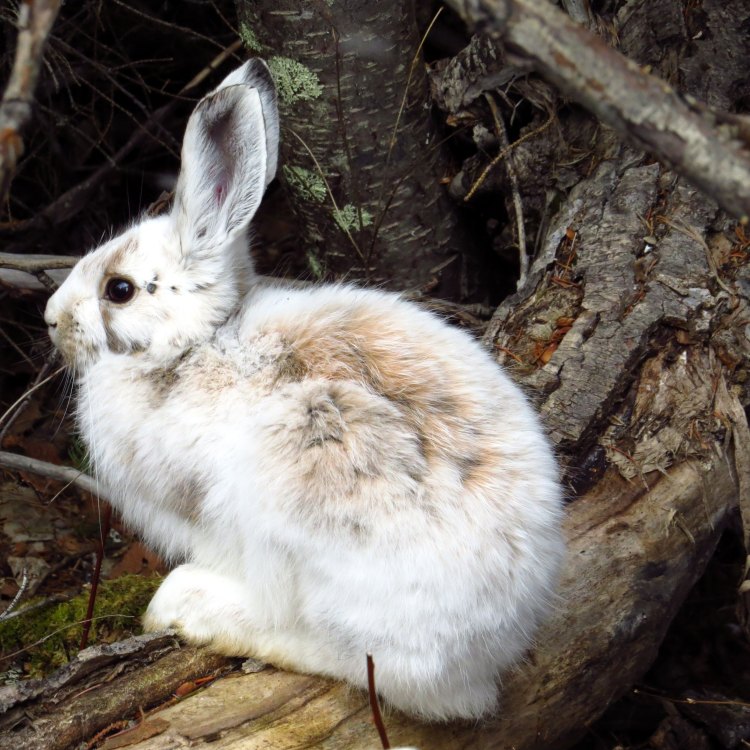
Snowshoe Hare
- Adult Size: 2-4 pounds (0.9-1.8 kg)
- Average Lifespan: 1-5 years
- Reproduction: Sexual
- Reproductive Behavior: Polygynous
- Sound or Call: Distinctive shrill scream
- Migration Pattern: Non-migratory
- Social Groups: Solitary
- Behavior: Nocturnal
- Threats: Predation, habitat loss, climate change
- Conservation Status: Least Concern
- Impact on Ecosystem: Prey species, food source
- Human Use: Hunting, fur, research
- Distinctive Features: Large hind feet, long ears
- Interesting Facts: Can change fur color to match surroundings
- Predator: Canada lynx, coyotes, owls
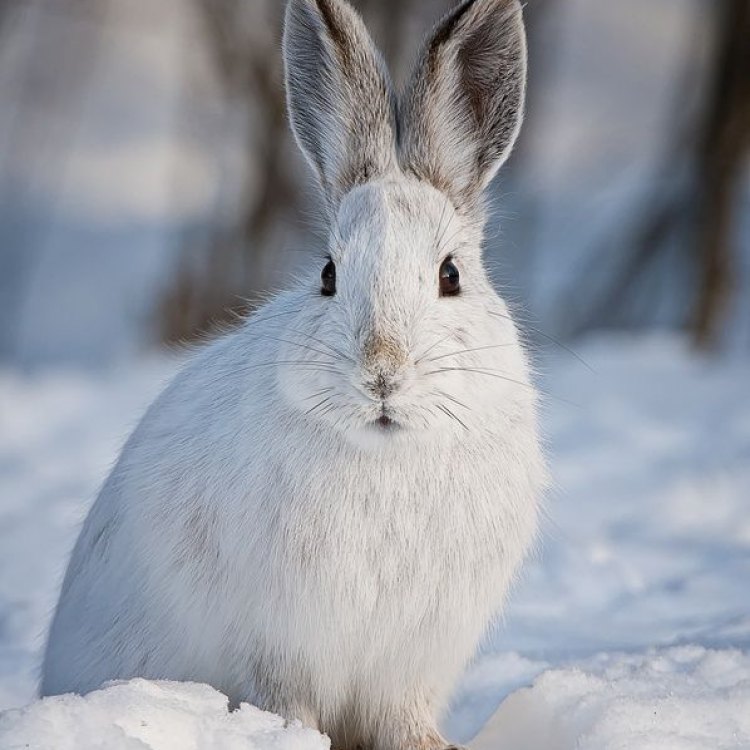
Lepus americanus
The Amazing Snowshoe Hare: A True Master of Adaptation
In the vast and unforgiving landscape of the northern boreal forests, a small creature roams, perfectly adapted to its surroundings. The snowshoe hare, also known as the varying hare, may seem unassuming at first glance, but a closer look reveals a highly intelligent and adaptable animal, full of fascinating features and behaviors.The snowshoe hare, Lepus americanus, is a species of hare native to North America. Its range extends from Alaska to Newfoundland and Labrador, and down to the southern United States PeaceOfAnimals.Com. They are most commonly found in boreal forests, but can also be found in mountainous regions and grasslands.
One of the most distinctive features of the snowshoe hare is its size. While most rabbits and hares are small, weighing around 2-4 pounds (0.9-1.8 kg), the snowshoe hare can reach sizes of up to 15 inches (38 cm) in length, making it one of the largest hares in North America. This size makes them a formidable prey species, as they are able to outrun many predators.
On average, snowshoe hares have a lifespan of 1-5 years in the wild. However, they face a number of threats that can significantly affect their survival rate. The most prominent of these threats is predation Sand Tiger Shark. Snowshoe hares are preyed upon by a variety of predators, including Canada lynx, coyotes, and owls. In order to avoid detection, they have evolved a unique adaptation of changing their fur color to match their surroundings. In the winter, their fur is white, blending in with the snow, while in the summer, it turns to a rusty brown, blending in with the forest floor. This incredible ability to camouflage helps them to evade detection from predators.
In addition to predation, snowshoe hares also face threats from habitat loss and climate change. As their natural habitat is cleared for agriculture and development, their populations decrease, and they struggle to find suitable places to call home. Climate change also poses a threat, as it affects the timing of when snow covers the ground, which can impact the hare's ability to blend in and survive.
Despite these threats, the snowshoe hare is currently listed as a species of Least Concern on the IUCN Red List, thanks to its wide range and adaptable nature. In fact, its ability to adapt and thrive in various habitats and climates has earned them the nickname "master of adaptation."
One area where this adaptation is evident is in their reproductive behavior. Snowshoe hares are polygynous, meaning that one male mates with multiple females during breeding season. This strategy ensures a higher chance of successful offspring, as well as diversifying the gene pool.
Breeding season for snowshoe hares begins in late winter and early spring. During this time, males will engage in aggressive behavior, fighting among each other to establish dominance and claim their territory. Females, on the other hand, will seek out a mate and compete with other females for the attention of a dominant male.
Once a female has successfully mated, she will give birth to a litter of 2-8 leverets, or baby hares, after a gestation period of 36 days. These tiny creatures are born fully furred and with their eyes open, ready to survive in the harsh wilderness. They will remain with their mother for only a few weeks before venturing out on their own, as snowshoe hares are solitary creatures and do not form social groups.
In addition to their reproductive behavior, the snowshoe hare also has a distinct sound or call. When threatened or in distress, they emit a loud shrill scream that can be heard from a distance. This call serves as a warning to other hares in the area and also helps to attract potential mates.
While snowshoe hares are known to be solitary creatures, they are also nocturnal, and their behavior at night can be quite surprising. They are actively foraging and on the move during this time, often hopping up to 16 feet (5 meters) in a single bound. This impressive athleticism, along with their large hind feet, allows them to navigate through the rugged terrain with ease.
The snowshoe hare is also a vital part of the ecosystem in which it lives. As a prey species, it serves as a food source for many predators. This regulates the predator population and helps to maintain a healthy balance in the ecosystem. In addition, snowshoe hares also play a key role in seed dispersal and nutrient cycling, as they consume various plants and then expel the seeds and nutrients in their droppings.
Not only do snowshoe hares benefit the ecosystem, but they also have a long history of human use. They have been hunted for their meat and fur for centuries by Indigenous peoples and European colonizers. Their fur, known for its softness and insulating properties, is used to make clothing and accessories. In addition, snowshoe hare populations are closely monitored and studied by researchers, providing valuable insights into the health of the ecosystem.
In conclusion, the snowshoe hare is a truly remarkable creature. From its large size to its ability to change fur color, it is perfectly adapted to its environment. However, this adaptable species is facing threats from predation, habitat loss, and climate change. It is imperative that we continue to protect and preserve the habitats of these incredible animals, not only for the sake of their survival but for the health of our ecosystems as well. The snowshoe hare may be small, but their impact on the world around them is immeasurable.
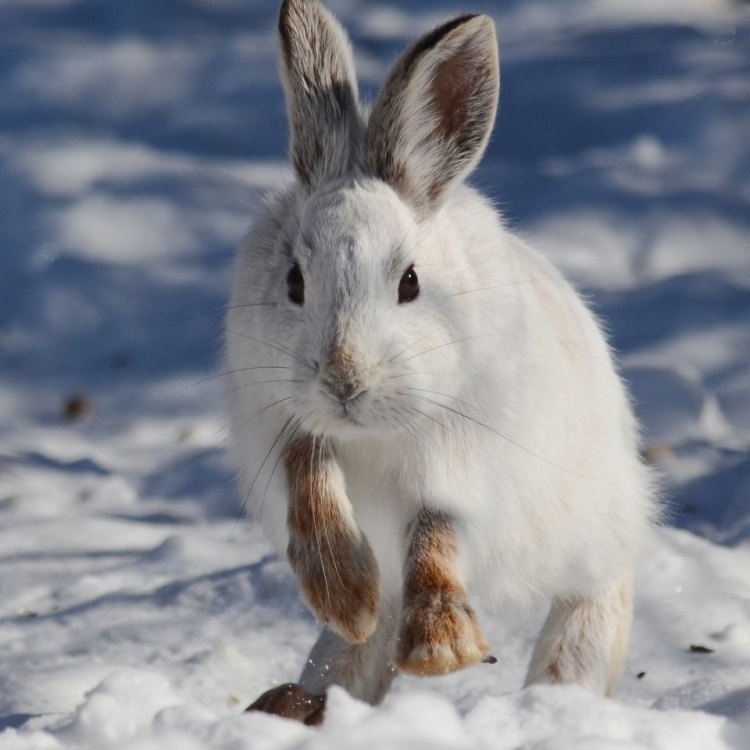
The Incredible Snowshoe Hare: Surviving in the Harsh Northern Climate
Disclaimer: The content provided is for informational purposes only. We cannot guarantee the accuracy of the information on this page 100%. All information provided here may change without prior notice.

